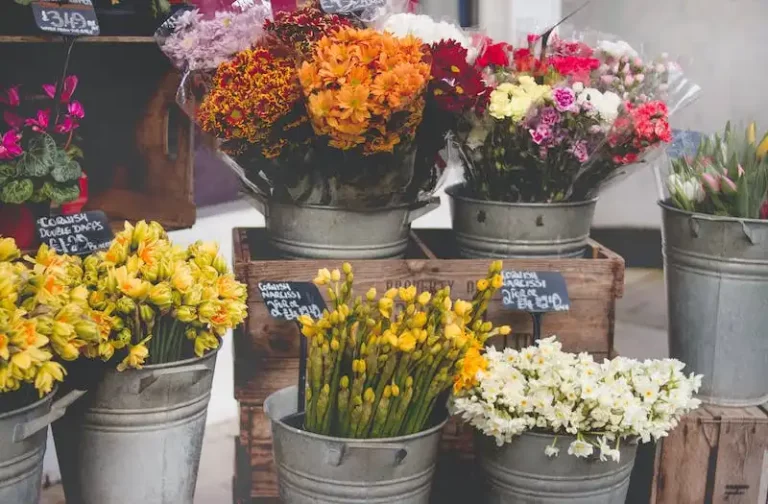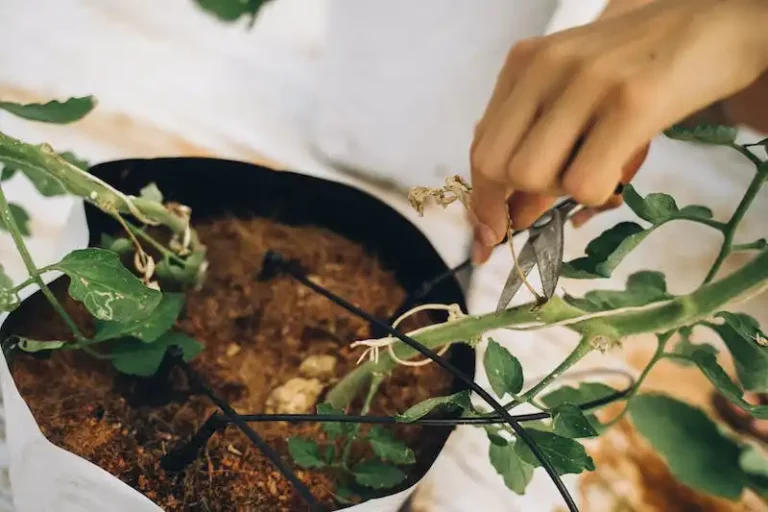Tomatoes are a staple in many vegetable gardens and can be a rewarding crop to grow. Whether you are a seasoned gardener or just starting out, growing tomato plants from seed can be a satisfying and fruitful experience. However, it does require some know-how to ensure success.
Transplanting tomato plants can be a delicate process. To ensure that your plants grow well and thrive, it may be helpful to follow these 7 simple secrets:
1. Select the best variety: There are many different types of tomatoes, each with their own unique flavors, sizes, and growth habits. Take the time to research and select a variety that is well-suited to your area and preferred gardening conditions.
2. Start indoors: Tomato seeds can be started indoors, weeks before the last frost date in your area. This allows for a longer growing season and gives your plants a head start. Simply plant the seeds in containers that are at least 3 inches in diameter and keep them in a warm, well-lit area.
3. Maintain the right moisture levels: Tomato seeds require sufficient moisture to germinate and grow. Keeping the soil consistently damp, but not soaking wet, is key. Regular watering is necessary, but be sure not to let the soil dry out completely.
4. Provide ample light: Tomato plants need plenty of sunlight to grow and produce fruit. If you don’t have access to sufficient natural light, you may consider using a grow light to supplement.
5. Transplant at the right time: Once your tomato seedlings have grown to about 6 inches tall and have at least 2 sets of true leaves, they are ready to be transplanted outdoors. Be sure to choose a sunny location with well-drained soil.
6. Harden off your seedlings: Before planting your seedlings outside, it is important to gradually acclimate them to the outdoor conditions. This can be done by placing them outside for a few hours a day, gradually increasing the time over several days.
7. Properly care for your plants: Once your tomatoes are in the ground, there are a few key things to keep in mind. Water them deeply, once or twice a week, rather than shallowly and frequently. Mulch around the plants to help retain moisture and prevent weed growth. Regularly monitor for pests and diseases, and take action if any issues arise.
Following these simple secrets will greatly increase your chances of successfully growing tomato plants from seed. With proper care and attention, you’ll be enjoying the fruits of your labor in no time!
If you found this guide helpful, sign up for our email list to receive more gardening tips and tricks.
How to Start Tomato Seeds Indoors
Starting tomato seeds indoors is a simple and effective method to ensure successful growth and a bountiful harvest. By starting your tomato seeds indoors, you have the opportunity to provide them with the ideal growing conditions they need to thrive.
To start tomato seeds indoors, there are several simple secrets that you should include in your process. First, select a high-quality seed that is suitable for your desired tomato plant. This ensures that your plant will have the best chance of success.
You can start your tomato seeds indoors during the winter months when the weather outside is too cold for young plants. This method makes it possible to have tomato plants ready to be transplanted into your garden once the weather warms up.
When starting tomato seeds indoors, it is important to provide them with the right amount of light. Tomato seedlings typically require 14-16 hours of light per day to grow strong and healthy. Consider using artificial lights, such as grow lights, to supplement natural light or provide the necessary light if you don’t have a sunny spot in your home.
To ensure successful germination of your tomato seeds, keep the soil consistently damp. However, be careful not to overwater as this can lead to seedling damping off, where the seedlings wilt and die due to excess moisture. It’s also important to maintain a humid environment by covering the seed tray with a plastic dome or placing it in a plastic bag until the seeds germinate.
Once your tomato seeds have sprouted, make sure to remove the plastic cover to prevent the seedlings from becoming leggy. At this stage, adjust the light source to a height of about 2 inches above the seedlings to provide enough light to promote strong stem growth.
As your tomato seedlings mature and grow, they will need to be transplanted into larger containers. By providing them with enough space for their roots to grow, you ensure that your plants will be able to develop a strong root system to support the growth of healthy fruits.
Feeding your tomato seedlings is another crucial step in their development. Use a balanced fertilizer, following the instructions on the package, to provide the necessary nutrients for optimal growth. It’s always better to err on the side of caution and feed your plants a little less rather than overfeeding them.
Now, with these simple secrets to starting tomato seeds indoors, you are ready to take on the challenge and successfully grow your own tomato plants from seed. Taking care of your tomato seedlings requires time and attention, but the rewards are well worth it. In a few weeks, you’ll have strong and healthy tomato plants ready to be transplanted into the garden, and in a few months, delicious homegrown tomatoes to enjoy!
Remember to follow the tips and guidelines provided above for the best chance of success. Happy seed starting!
8 Things You Can Do To Get More Tomatoes This Year
If you’re a tomato gardener and want to maximize your tomato harvest this year, there are a couple of key things you can do to increase your chances of success. By following these simple tips, you can ensure a bountiful crop of flavorful tomatoes.
1. Start Earlier: Tomato plants need time to grow and produce fruit, so starting your seeds indoors a couple of weeks earlier than your average last frost date can give them a head start.
2. Choose the Right Varieties: Some tomato varieties are naturally late-season producers, while others have the power to bear fruit earlier in the season. Choose varieties like Brandywine, which have a longer growing season, to enjoy delicious tomatoes even late in the year.
3. Use Stakes or Supports: Train your tomato plants to grow on stakes or other support materials. This will help keep the plants upright, provide sufficient airflow, and make it easier for you to pick the ripe fruits.
4. Transplant Deeper: When planting your tomato seedlings, bury them deeper than the soil line. By doing this, the plants can develop more roots and become stronger, resulting in healthier and more productive plants.
5. Provide Sufficient Water: Tomatoes need consistent watering throughout their growing season. Keep the soil moist, but avoid overwatering, as it can lead to diseases and rotting.
6. Check Soil Nutrients: Before planting, check your soil for nutrient deficiencies. Tomatoes are heavy feeders and require well-balanced soil to thrive. Consider adding organic matter or fertilizer to ensure your plants have the nutrients they need.
7. Consider Using Starter Plants: If you don’t have the equipment or time to start seeds indoors, consider purchasing starter plants from a local garden center. These plants are generally healthier and will give you a head start.
8. Protect Against Late-Season Frost: If you live in an area with late-season frosts, protect your tomato plants using plastic covers or cloches. This will help keep them warm and prevent damage from cold temperatures.
By following these steps, you can increase your tomato yield and enjoy the taste of fresh, homegrown tomatoes all season long. Happy gardening!
What You’ll Need
When it comes to growing tomato plants from seed, there are a few essential items you’ll need to get started.
First and foremost, you’ll need soilless seed starting mix. This type of mix is specifically designed for starting seeds and provides a sterile environment for germination. Using soilless mix also helps prevent diseases that can be present in regular garden soil.
In addition to the soilless mix, you’ll need containers to sow your tomato seeds. Seed trays or pots with drainage holes are the best options. Make sure the containers are clean and sterilized before planting to avoid any diseases or pests.
To provide the optimum conditions for germination, you’ll need to maintain a warm and well-lit environment. Tomato seeds generally like temperatures between 70-80°F (21-27°C) for successful germination. Using a heat mat or placing the seed containers near a heat source can help create the warmth they need.
Light is another essential factor in growing tomato plants from seed. If you’re starting your seeds indoors, make sure they receive sufficient light. If natural sunlight is not available, you can use fluorescent grow lights.
Tomato seedlings also require proper nutrition for healthy growth. You’ll need to provide them with a balanced fertilizer to ensure they have all the necessary nutrients. Alternatively, you can use compost or organic fertilizers if you prefer a more natural approach.
Lastly, don’t forget to label your containers! Tomato seedlings can look very similar, especially when they are tiny. Labeling your containers will help you keep track of different varieties and avoid confusion.
In summary, here’s a list of what you’ll need to grow tomato plants from seed:
- Soilless seed starting mix
- Containers with drainage holes
- Warm and well-lit environment
- Heat mat or heat source
- Proper lighting (natural or fluorescent)
- Balanced fertilizer or compost
- Labels for seed containers
By having these items ready before you start the seed sowing process, you’ll be well-prepared to achieve success in growing healthy tomato plants.




